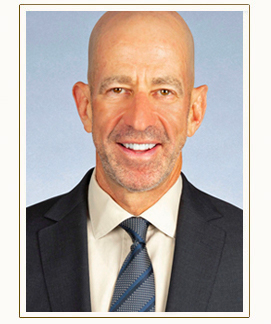By: Bernard A. Krooks, J.D., CPA, LLM (in taxation), CELA®, AEP® (Distinguished)
Maybe you’ve been named guardian (of the person) for a family member, colleague, or friend. Maybe you’ve been listed as an agent in a health proxy. Maybe you’re a family member with authority to make health care decisions (New York, like a number of other states, permits family members or others to make most health care decisions in at least some cases). How you got there is not the point, at least not for today. Today’s question: how do you go about making decisions for someone else when you have been given the power — and responsibility — to do so?
For centuries the American common law (and its English predecessor) focused on the “best interest” of someone who was no longer able to make their own decisions. It was not until relatively recently that the concept of “substituted judgment” began to seep into legal discussions. Today the latter notion drives health care decision-making in most cases.
But what does that mean? One early description suggested that a person making decisions for someone else should try “to reach the decision that the incapacitated person would make if he or she were able to choose.” That means that the decision-maker should try to substitute the patient’s decision for his or her own, not the other way around. In other words, the guardian/agent/surrogate should first try to figure out what the patient/principal would want in the circumstances.
Let’s simplify some of the language, just to keep things from bogging down in legalisms. Let’s use “principal” for the person signing a health care proxy, or subject to a guardianship, or (however they got there) presently incapable of making decisions. The person making the decision, signing the hospital’s forms, choosing a facility, or whatever — we’ll call him or her the “surrogate”.
So now you’re the surrogate, and you’re trying to figure out what you should consider when making your decisions. Here’s a list (probably not comprehensive) of things you might look to:
Did the principal sign any documents? A living will, for instance, might give some insight into the principal’s wishes. There are plenty of other documents that might be useful, though — from worksheets filled out at a seminar on advance directives to letters to family members to descriptions of other patient’s circumstances.
Did you have any conversations with your principal? Maybe you talked about other patients in the news, and how your principal felt about their stories. Be careful here — we remember one client who adamantly said she didn’t want to “go through what Terri Schiavo did.” It wasn’t until we followed up with the client that we figured out that she meant that she thought it was terrible that the legal system allowed Ms. Schiavo to die. We had assumed that she meant she wouldn’t have wanted to be kept alive, but that was the exact opposite of her meaning.
Did anyone else have conversations with your principal? Ask family, friends, co-workers and others who might have discussed health care issues with the principal while they were still capable of forming a decision.
Ask your principal. Is he or she able to talk at all? Then ask for direction. That doesn’t mean you have to follow whatever a now-demented patient says he or she wants — the principal might simply respond affirmatively to almost every question, making the answer depend on how you ask. But just because you’ve been given responsibility for the decision it does not follow that your principal’s opinion is no longer relevant.
Consider your principal’s life history. Was he or she particularly religious, or irreligious? Do you know what family members would prefer (and whether your principal would be more likely to agree with or oppose the family)? Did other family members or acquaintances go through similar circumstances, and is your principal’s response helpful to you while making this decision?
Talk to the medical team. What seems like a major decision might not seem so significant after you’ve discussed the risks and burdens associated with a given procedure (or decision to forego a procedure).
If you can’t figure out what your principal would want, then you move from applying “substituted judgment” principles to determining the “best interests” of your principal. But that doesn’t necessarily mean that you have to approve treatment.
Weigh the “burdens” of treatment against the benefits. Is a proposed operation painful, dangerous, or uncertain? Or might it alleviate pain, make your principal more comfortable, or increase the odds of recovery?
Strive for consensus. You are supposed to be figuring out what your principal would want, but the input of family, friends and the medical community is worth considering in an attempt to avoid infighting, undercutting and acrimony. Your principal’s care might not be best-served by having a difficult situation made more tense.
As a last resort, consider submitting difficult choices to the courts for resolution. That gives everyone a chance to air their positions in a formal setting, and focuses the questions on the principal’s wishes — and care. But it is time-consuming and expensive, and should not be invoked unless there is real difficulty in making the correct decision.
It is a challenge to make health care decisions for someone else. It is also a terrific gift to the principal to accept the responsibility and discharge it carefully and well. Another day we’ll write about how you can make that job easier when you’re the principal rather than the surrogate. In the meantime, take the surrogate’s job seriously, and do your best to substitute your principal’s decisions for those you might make for yourself.
Learn more about our services by visiting www.littmankrooks.com.
Was this article of interest to you? If so, please LIKE our Facebook Page by clicking here.




 Our guest blogger this week is Emily Newhook, the community relations manager for the online master of public health (MPH@GW) offered through the Milken Institute School of Public Health at The George Washington University. She lives in Washington, D.C. Follow her on Twitter
Our guest blogger this week is Emily Newhook, the community relations manager for the online master of public health (MPH@GW) offered through the Milken Institute School of Public Health at The George Washington University. She lives in Washington, D.C. Follow her on Twitter 

 Our guest blogger this week is Jamie Mendelsohn, Vice President,
Our guest blogger this week is Jamie Mendelsohn, Vice President, 